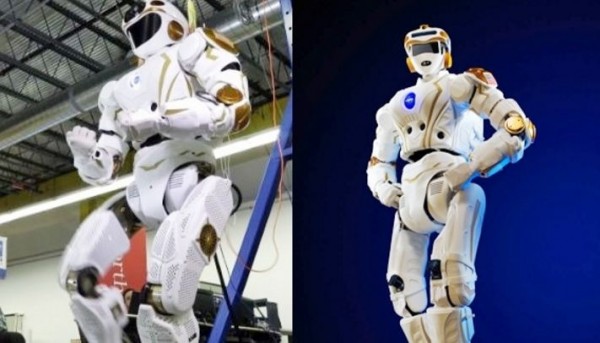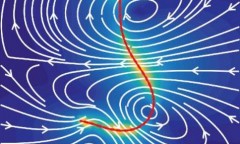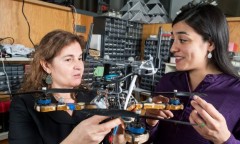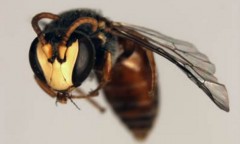By Arthur Dominic J. Villasanta , | March 21, 2017

(Left) Val, the Martian she robot, as she looks today. (Right) Val as she looked in 2013.
Three prototypes of the "female" humanoid robots that will precede humans to Mars are being prepared for an exhaustive series of tests at a facility called "NERVE" at the University of Massachusetts Lowell to determine which will be the first to set foot on the Red Planet.
Welcome "Val" or the Valkyrie R5 Space Robot worth $2 million apiece.
Like Us on Facebook
Since 2015, Northeastern University in Boston has had in its care one of the Vals. Northeastern's Val is currently being run through a series of tests to prepare for the finalist round of a competition in June where a virtual simulation of a landing on Mars will be effected.
Val, which is referred to as a "she robot," "can autonomously make decisions, move around, and accomplish tasks."
Val has been moved to NERVE (New England Robotics Validation and Experimentation) Center, a large warehouse space operated by University of Massachusetts Lowell. Inside NERVE are the large obstacle courses designed to put test robots such as R5 and drones through their paces.
Val will compete against two of the three other R5 models also produced by NASA. The other two are with MIT and the University of Edinburgh.
In the finalist round, "each team's R5 will be challenged with resolving the aftermath of a dust storm that has damaged a Martian habitat. This involves three objectives: aligning a communications dish, repairing a solar array, and fixing a habitat leak," said NASA.
The honor of being the first extraterrestrial to set foot on Mars in 2035 won't go to a human being. Rather, it might go to a female humanoid robot made by human beings.
NASA intends Val to build the habitats and structures needed by frail human beings to survive on the hostile environment pervading the Red Planet. These females will pave the way for the human colonization of Mars.
Val was introduced by NASA to the world in December 2013 as an entry to the DARPA Robotics Challenge Trials. She was originally designed by NASA for disaster-relief and was billed as a "superhero robot." Back then, she stood 1.9 meters tall and weighed 125 kilograms.
-
Use of Coronavirus Pandemic Drones Raises Privacy Concerns: Drones Spread Fear, Local Officials Say

-
Coronavirus Hampers The Delivery Of Lockheed Martin F-35 Stealth Fighters For 2020

-
Instagram Speeds Up Plans to Add Account Memorialization Feature Due to COVID-19 Deaths

-
NASA: Perseverance Plans to Bring 'Mars Rock' to Earth in 2031

-
600 Dead And 3,000 In The Hospital as Iranians Believed Drinking High-Concentrations of Alcohol Can Cure The Coronavirus

-
600 Dead And 3,000 In The Hospital as Iranians Believed Drinking High-Concentrations of Alcohol Can Cure The Coronavirus

-
COVID-19: Doctors, Nurses Use Virtual Reality to Learn New Skills in Treating Coronavirus Patients










